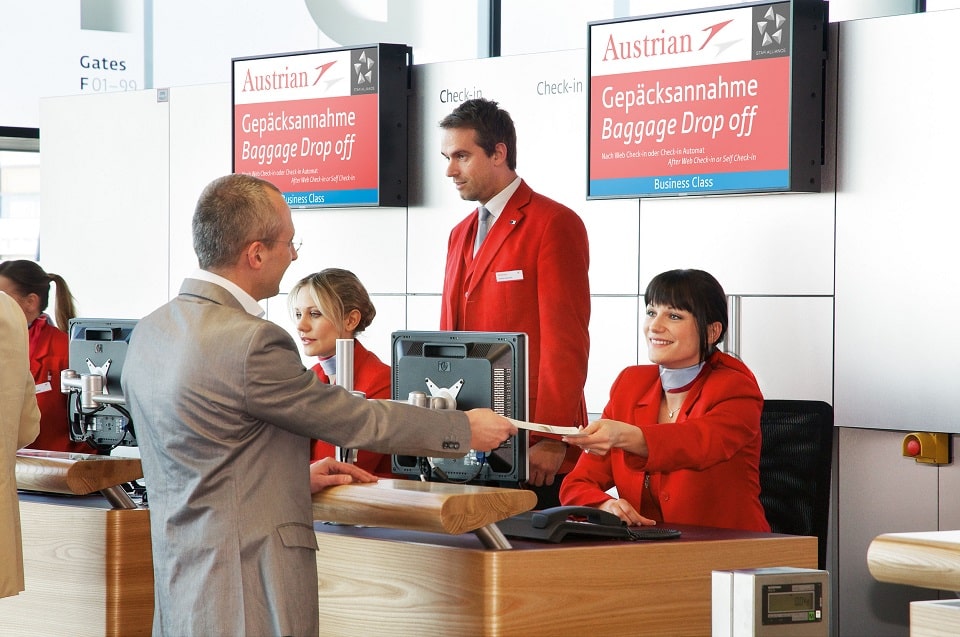Airlines
Understanding Web Check-In Fees : To Pay or Not to Pay

A web check-in, often referred to as online check-in, is a useful service provided by airlines to enable travelers to check in for their flights online or using a mobile app prior to arriving at the airport.
Whether it is free or not can depend on the airline and the specific circumstances. In many cases, web check-in is provided as a free service by airlines. However, some airlines may offer different types of check-in services, such as premium or expedited check-in options that may come with a fee.
Additionally, there could be situations where you incur fees for other reasons, such as checking in oversized or excess baggage. It’s important to check with the specific airline you’re flying with to understand their policies and any potential fees associated with web check-in.
Passengers who are members of an airline’s frequent flyer or loyalty program may enjoy complimentary benefits such as free seat selection or priority check-in, which may also apply during web check-in. Airlines normally open the web check-in window 24 to 48 hours before the scheduled departure time. The actual time frame varies by airline.
Passengers who prefer not to use web check-in or who encounter difficulties with the process can still check in at the airport. However, airport check-in may have longer wait times, especially during peak travel periods, and passengers are encouraged to arrive at the airport well in advance of their flight’s departure time.
India’s Low-cost carriers also clarified that Web check-in is not a mandatory requirement, however, for a hassle-free flight experience, we recommend our customers to web check-in in advance. Web check-in allows customers to have a smooth experience at the airport

Airlines
Sanctions & Engine Issues Ground Half of Russia’s A320neo fleet

Russia’s aviation sector, already strained by Western sanctions, faces another setback as nearly half of its Airbus A320neo family aircraft are grounded due to unresolved engine issues.
This development highlights the growing challenges for russia commercial aircraft in maintaining their fleets under the weight of global restrictions and limited access to spare parts.
Out of the 66 Airbus A320neo and A321neo jets in Russia, 34 are now out of service, according to the Kommersant business newspaper. These planes are powered by engines manufactured by Pratt & Whitney, a subsidiary of RTX Corporation.
DAMAC Air: Dubai’s New Luxury Airline Offers Free Flights for Registration
The engines are affected by a previously identified defect in the metal used for certain parts, prompting accelerated inspections and maintenance.
Sanctions have compounded the issue, blocking the supply of essential components from major manufacturers like Boeing and Airbus. Without proper maintenance, experts warn that these aircraft may face decommissioning as early as 2026.
COMAC Unveils Plans for the C929 to Rival Airbus and Boeing
Airlines like S7, which operates a significant portion of these grounded jets, plan to conserve the engines for future use during peak travel seasons. However, reports suggest that over 20 of S7’s Airbus planes have engines that have already reached the end of their operational lifespan. Recently, russia seeks assistance from kazakhstan’s airlines to bolster its domestic flights.
While some A320neo and A321neo planes in Russia are equipped with French-made LEAP engines, which are seen as less problematic, the challenges remain daunting.
The situation underscores the long-term impact of sanctions on Russia’s aviation sector and the increasing difficulties in keeping its modern fleets operational.
-

 Aviation2 months ago
Aviation2 months agoMicrosoft Flight Simulator Raises $3 Million to Bring Back the An-225 Mriya
-

 Airlines2 months ago
Airlines2 months agoQantas Engineers Stage Walkout Over Cost of Living Concerns
-

 Airlines2 months ago
Airlines2 months agoQatar Citizens Can Travel to the United States Without a Visa
-

 Aviation2 months ago
Aviation2 months agoQatar Airways bans these new Electronic Devices on plane
-

 Airlines2 months ago
Airlines2 months agoJapan Airlines Rolls Out Free Domestic Flights to International Passengers
-

 Defence2 months ago
Defence2 months agoWhich Country Has the Largest Fleet of Fighter Aircraft?
-

 Airport2 months ago
Airport2 months agoWestern Sydney Airport Welcomes Its First Plane After 6 Years of construction
-

 Travel2 months ago
Travel2 months agoQatar Airways Launches Four Additional Flights from Amsterdam








